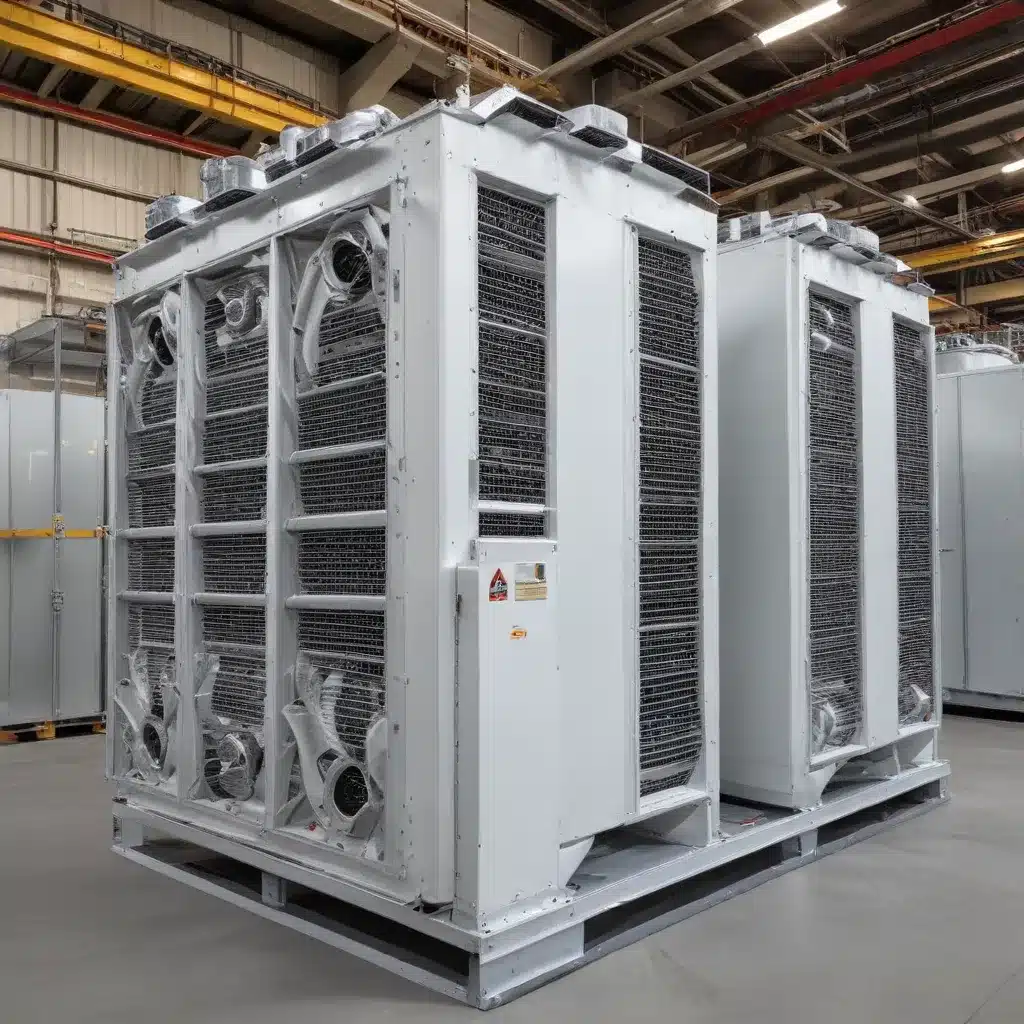
In the ever-evolving landscape of thermal management solutions, air-cooled heat exchangers have emerged as a versatile and efficient choice across various industries. As the demand for sustainable, resilient, and adaptable heating, ventilation, and air conditioning (HVAC) systems continues to rise, the integration of air-cooled heat exchangers with cutting-edge thermal energy storage (TES) technology presents a promising pathway for optimizing operational performance and enhancing energy flexibility.
Unlocking the Potential of Air-Cooled Heat Exchangers
Air-cooled heat exchangers have long been a staple in industrial and commercial applications, offering a robust and reliable solution for transferring thermal energy. These systems leverage the natural convection of air to dissipate heat, eliminating the need for water or other liquid coolants and reducing maintenance requirements. However, as building energy efficiency and grid integration become increasingly crucial, the need to further enhance the capabilities of air-cooled heat exchangers has become paramount.
Leveraging Advanced Materials and Design Innovations
Recent advancements in material science and engineering have enabled significant improvements in the design and performance of air-cooled heat exchangers. The use of innovative materials, such as high-conductivity alloys and nanomaterials, has enhanced heat transfer coefficients, resulting in more efficient heat dissipation. Additionally, refined fin geometries and optimized airflow patterns have contributed to increased surface area and improved heat transfer, leading to enhanced overall thermal performance.
Addressing Operational Challenges
While air-cooled heat exchangers offer numerous advantages, they are not without their operational challenges. Factors such as varying ambient temperatures, fluctuating cooling demands, and intermittent renewable energy sources can introduce complexities in maintaining consistent and efficient operation. Addressing these challenges requires a holistic approach that integrates advanced control systems, predictive maintenance strategies, and flexible energy management capabilities.
Integrating Thermal Energy Storage for Improved Flexibility
The integration of air-cooled heat exchangers with thermal energy storage (TES) systems presents a promising solution for enhancing operational flexibility and resilience. TES technologies allow for the storage of thermal energy, which can be subsequently discharged to meet heating or cooling demands, effectively decoupling energy supply and demand.
Advantages of TES Integration
By incorporating TES systems into air-cooled heat exchanger applications, users can benefit from several key advantages:
-
Load Shifting and Demand Response: TES systems enable the shifting of energy consumption from peak to off-peak periods, allowing for better alignment with renewable energy sources and grid demands. This flexibility can contribute to cost savings and improved grid stability.
-
Improved Operational Efficiency: The ability to store and discharge thermal energy can help maintain consistent heat exchanger performance, reducing the impact of fluctuating ambient conditions and varying cooling loads.
-
Enhanced Resilience: TES systems can serve as backup thermal energy sources, providing a buffer against disruptions in the primary energy supply and enhancing the overall resilience of the HVAC system.
-
Reduced Carbon Footprint: The integration of TES with air-cooled heat exchangers can support building decarbonization efforts by facilitating the integration of renewable energy sources and reducing the reliance on fossil fuels for heating and cooling.
Advancements in TES Technology
Recent research and development efforts have led to significant advancements in TES technologies, making them more practical and cost-effective for integration with air-cooled heat exchangers. These advancements include the development of compact, modular TES systems, the use of advanced phase-change materials (PCMs) with higher energy densities, and the optimization of thermal charging and discharging processes.
A recent study published in the journal Energy Conversion and Management showcases the potential of integrating air-cooled heat exchangers with TES systems. The researchers demonstrated the ability to improve the overall system efficiency, reduce energy consumption, and enhance load-shifting capabilities through the strategic integration of TES components.
Practical Considerations for Successful Integration
Integrating air-cooled heat exchangers with TES systems requires careful planning and consideration of various factors to ensure optimal performance and seamless integration.
Design and Sizing Considerations
The selection and sizing of the TES system must be aligned with the specific requirements of the air-cooled heat exchanger, taking into account factors such as cooling/heating loads, ambient conditions, and energy consumption profiles. Proper integration of the TES system with the existing HVAC infrastructure is critical to ensure efficient and reliable operation.
Control and Automation Strategies
Effective control and automation systems are essential for managing the integration of air-cooled heat exchangers and TES systems. Advanced control algorithms, predictive analytics, and intelligent load management can optimize the coordination between the two systems, ensuring efficient energy utilization and thermal management.
The California Energy Commission’s report on “Advanced Thermal Energy Storage Systems for Building Applications” provides valuable insights into the integration of TES systems with building HVAC, highlighting the importance of control strategies and automated optimization.
Maintenance and Monitoring
Proper maintenance and monitoring of the integrated air-cooled heat exchanger and TES system are crucial for ensuring long-term reliability and optimal performance. Regular inspections, preventive maintenance, and real-time monitoring can help identify potential issues, optimize energy efficiency, and extend the lifespan of the overall system.
The Department of Energy’s latest funding announcement highlights the agency’s focus on developing advanced TES technologies and retrofit practices for buildings, underscoring the growing importance of integrating these systems with HVAC applications.
Conclusion: Embracing the Future of Air-Cooled Heat Exchangers
As the demand for energy-efficient, resilient, and flexible thermal management solutions continues to rise, the integration of air-cooled heat exchangers with cutting-edge thermal energy storage technology presents a compelling opportunity. By leveraging the synergies between these two systems, building owners, facility managers, and industrial operators can unlock a new era of operational flexibility, enhanced energy performance, and improved sustainability.
By staying at the forefront of these advancements, the Air Cooled Heat Exchangers community can play a pivotal role in shaping the future of thermal management, contributing to a more sustainable and resilient built environment.

